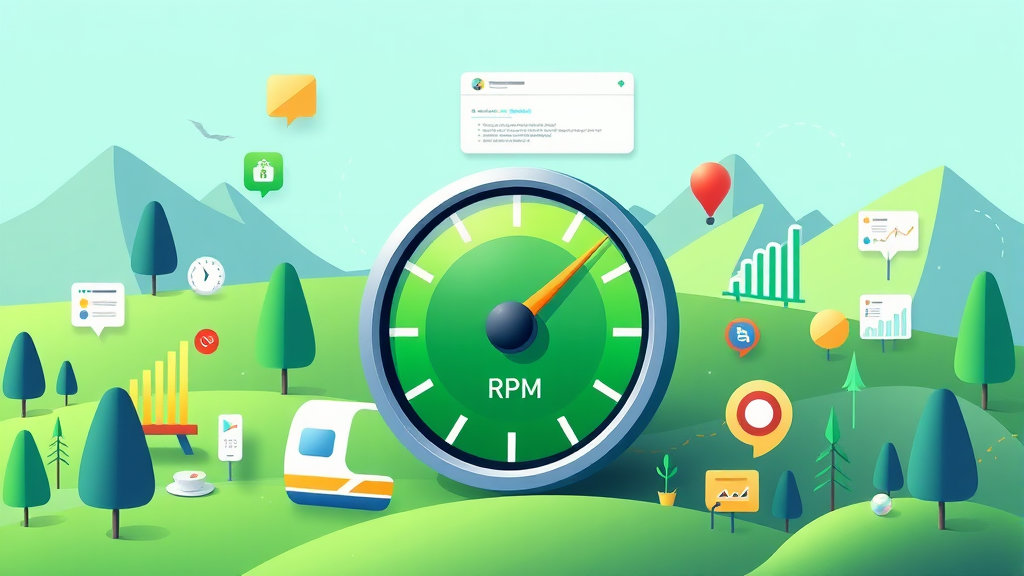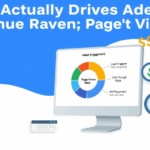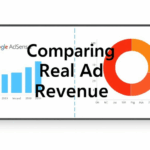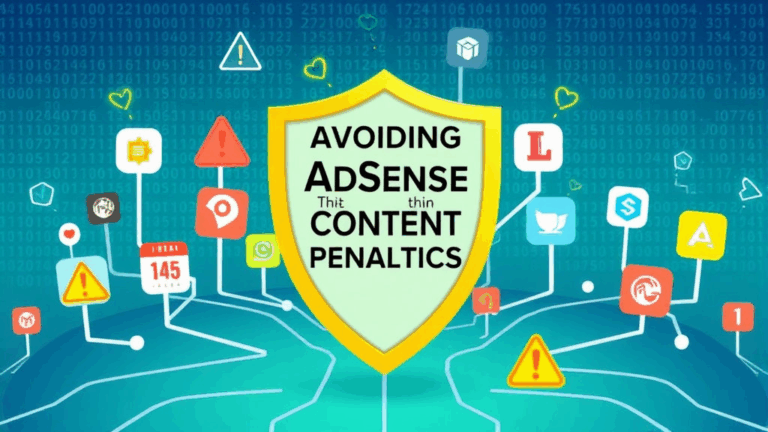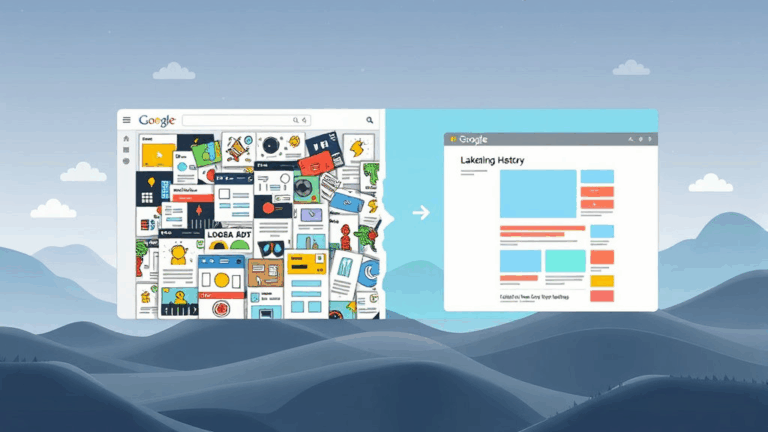How I Actually Got My AdSense RPM to Stop Tanking Itself
What Is RPM Really Measuring? (It’s Not Your Clicks)
So, RPM — Revenue per Mille — sounds simple. It’s how much money you make per 1,000 pageviews. In theory. But in AdSense land, RPM lies with a smile. It’s not just tied to clicks or even impressions. It folds in a dozen fuzzy logic layers — location, ad loading priority, lazy-load misfires, and whether a random Chrome extension blocks something in a sneaky way.
Your RPM could drop because:
- A single geo jump — like more traffic from India instead of the US — shifted everything.
- A newer browser build delays ad scripts by 200ms, causing MCM (multi-client management) conflicts server-side that never get logged.
- You added content that tanked viewability ratings because it loaded heavier than expected, pushing ads below the fold.
- Some days, Google just experiments with fill rates and doesn’t tell anyone.
I once saw a client’s RPM cut in half for three weeks. No content changes, no traffic difference. Turns out the culprit was an auto-inserted table of contents script that subtly delayed adsbygoogle.push({}), so ads were still initializing when the user was already scrolling past.
Ad Balance Sliders Don’t Work the Way You Think
You’d think pulling the Ad Balance slider down would just reduce low-paying ads. Logical, no? Problem: that slider only reduces the inventory your site participates in — not just the low-cost filler. I tested two identical sites, one with balance at 100%, one at 80%. Revenue looked better at 80% for the first few days. Then RPM started limping.
The messed-up part? When Ad Balance dropped, Page RPM looked okay at first because higher-quality ads got more placement per page. But fewer impressions overall meant the earnings cratered over a week because the advertiser competition thinned.
Also, something no one tells you: if you’re using MCM (like managing multiple child accounts), the Ad Balance setting on one affects the demand pool of the whole thing if held under the same payment profile. That effect doesn’t show up anywhere in the UI or reporting, by the way.
Undocumented Bug with Anchor Ads and IntersectionObserver
If you’ve ever custom-coded a sticky footer and used IntersectionObserver to fire a CTA bar or dynamic widget near the bottom of the screen — congrats — you’ve probably broken Google’s anchor ad rendering without knowing it.
In some browsers, especially Safari + iOS with reduced motion settings, the IntersectionObserver triggers suppress the anchor ad because AdSense treats the visual viewport shift as a user gesture. In one case, we found a div with position: fixed causing Google’s anchor code to silently fail without error.
This quote from a console log made me gasp:
adsbygoogle.push error: anchor slot aborted due to motionBlocker. That’s not documented anywhere.
Disabling IntersectionObserver for a small set of screen widths actually fixed the issue on three themes I maintain. That fix had to live behind a UA string check because it only mattered for WebKit-heavy environments.
Accidentally Breaking RPM with Too Many Experiments
Yeah, A/B testing ad layouts with AdSense sounds like a good idea until you accidentally add three experiments in staging, forget to remove them in prod, and suddenly your RPM splits like a banana. Google does zero sandboxing logic here. If you run simultaneous layout and ad density tests, the cross-effects aren’t isolated. That creates weird combinations that the system tries to optimize, and it gets confused.
I once had an ‘aha’ moment looking through old AdSense Experiments history — you can’t even delete failed tests. They run their course and stay there whispering bad ideas into your layout for months unless you manually revert any CSS or JS that ran during the experiment period, even if it’s disabled now.
Pro tip: if your RPM feels haunted, check adsbygoogle.push() calls for leftover experiment keys.
Auto Ads Will Eat The First Viewport If You Let Them
If you flip on Auto Ads and have no heading image above the fold, Google will happily insert a giant ad block after your first paragraph. That absolutely nukes LCP (Largest Contentful Paint) scores, and then Core Web Vitals demotes you in Discover/news visibility, which hits high-CTR mobile traffic hardest. Which hits RPM.
Even though it’s “automatic,” Auto Ads inserts tags based on perceived breakpoints. But the detection is way looser than documented. In one case, it saw a 300px vertical padding stub as a paragraph and placed a 728×90 ad slab that pushed the actual content down to the second viewport entirely.
I now always pair Auto Ads with these:
<meta name="google-adsense-platform-account" content="ca-host-pub..." />— to match my layout profile via scoped accounts- Min-width CSS guards around my main content, so Google knows what is “real” layout
- One dummy
<div style="min-height:100px"></div>to guide placement sanity
If you don’t want to go full blocklist, these micro nudges help Auto Ads behave like a polite roommate instead of dropping a futon in your living room without asking.
Logs, Filters, and RPM Collapse on Cached Pages
This one took me five months to figure out. My AdSense RPM tanked on a high-performing blog post. traffic looked the same on GA and Search Console, but impressions halved and revenue nosedived. Ready for the nonsense? The server-side cache plugin had an older version of the page (before ads were added) stuck in queue — but only on mobile devices, due to a UA split config I forgot was active.
So basically:
- A bot hit it with empty cache, cached the ad-free version
- Mobile users kept getting the pre-AdSense version for weeks
- GA still saw sessions — but AdSense saw… nothing
Caching layers (especially Cloudflare or Varnish) won’t always pass AMP JS or dynamic ad scripts properly unless explicitly set to ignore scripts with dynamic signatures. The AdSense crawler sometimes gets ghosted here.
I landed on using a no-cache flag via cookie header on Googlebot + adsense crawler agents, and created a 3-minute rolling cache purge script for any page modified in the last 24 hours.
How One HTML Comment Confused the Entire Ads Script
I copied a layout from a marketplace template that had a comment like this midway through the HTML: <!-- page content ends --></div>. Guess what? Turns out the AdSense parser assumes comment end-tags sometimes as div closure intentions — particularly for Auto Ads placement sniffers.
This was on a WordPress custom theme. After wrapping ads in a .adsbygoogle-wrapper span and manually pushing the ad slot, I got zero fill. Console was clean. Network tab said ad call succeeded, but the DOM placement never happened.
Deleting that one comment (which wasn’t closing any open element) caused ads to reappear. Is it a parsing edge? Maybe. Feels like Google’s layout detection crawlers get spooked by ghost tags or something that mimics malformed HTML logic.
I now scrub all themes and includes for straggler comment tags with semantic-ish words (“footer”, “end”, “aside”) just to dodge this phantom bug.
Compression + Minify Plugins That Strip Crucial Ad Breaks
Some SiteGround and Litespeed optimizers strip <script> tags into async calls or reorder them unless explicitly excluded. When applied to AdSense code blocks that rely on adsbygoogle.push() running in page flow, this quietly breaks your monetization tier and drops RPM by half or more — with zero visible errors.
The hard part? Only shows up when traffic goes up. At low traffic, caching short-circuits the problem. But once a post starts trending, Google tries higher-tier ads with stricter sequencing, and your script reordering ruins it mid-stream.
I burned a Saturday chasing this one. Only fix: whitelist adsbygoogle.js in all minification scripts (including cloud-level ones like on Cloudflare), and add inline-script exclusion classes on AMP-flavored pages.
